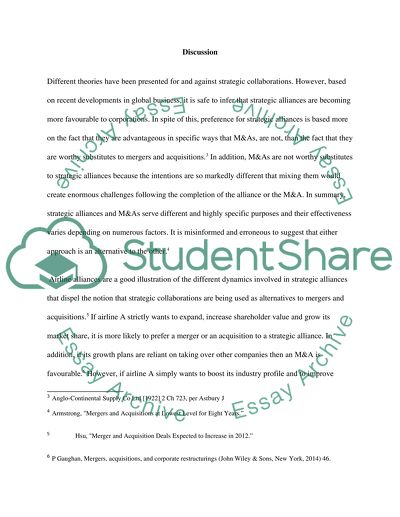Cite this document
(“Legal Aspects of International Mergers, Acquisitions and Takeovers: Essay”, n.d.)
Legal Aspects of International Mergers, Acquisitions and Takeovers: Essay. Retrieved from https://studentshare.org/law/1687690-legal-aspects-of-international-mergers-acquisitions-and-takeovers-title-is-strategic-collaborations-rather-than-acquisitions-are-increasingly-used-as-an-alternative-to-acquisitions-or-mergers-critically-discuss
Legal Aspects of International Mergers, Acquisitions and Takeovers: Essay. Retrieved from https://studentshare.org/law/1687690-legal-aspects-of-international-mergers-acquisitions-and-takeovers-title-is-strategic-collaborations-rather-than-acquisitions-are-increasingly-used-as-an-alternative-to-acquisitions-or-mergers-critically-discuss
(Legal Aspects of International Mergers, Acquisitions and Takeovers: Essay)
Legal Aspects of International Mergers, Acquisitions and Takeovers: Essay. https://studentshare.org/law/1687690-legal-aspects-of-international-mergers-acquisitions-and-takeovers-title-is-strategic-collaborations-rather-than-acquisitions-are-increasingly-used-as-an-alternative-to-acquisitions-or-mergers-critically-discuss.
Legal Aspects of International Mergers, Acquisitions and Takeovers: Essay. https://studentshare.org/law/1687690-legal-aspects-of-international-mergers-acquisitions-and-takeovers-title-is-strategic-collaborations-rather-than-acquisitions-are-increasingly-used-as-an-alternative-to-acquisitions-or-mergers-critically-discuss.
“Legal Aspects of International Mergers, Acquisitions and Takeovers: Essay”, n.d. https://studentshare.org/law/1687690-legal-aspects-of-international-mergers-acquisitions-and-takeovers-title-is-strategic-collaborations-rather-than-acquisitions-are-increasingly-used-as-an-alternative-to-acquisitions-or-mergers-critically-discuss.


